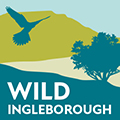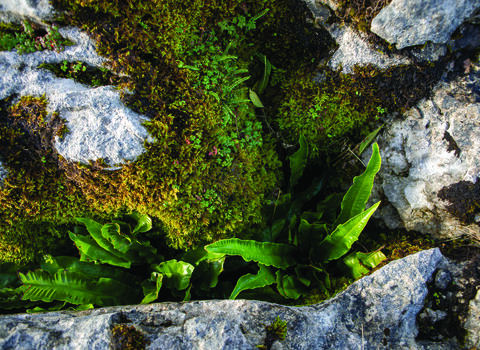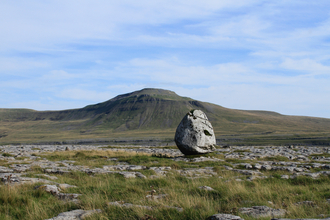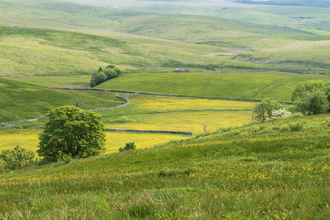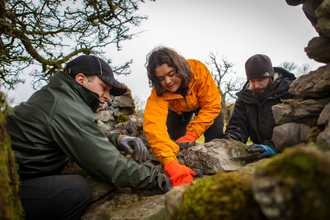Replicating nature's balancing act...
Through a combination of conservation grazing, traditional land management, and natural regeneration, we are reviving and re-establishing habitats to support hundreds of species.
Habitats like blanket bog, wood pasture, wildflower meadow, and the unique limestone pavement that makes Ingleborough so special, are all being restored.
Upland plant nursery
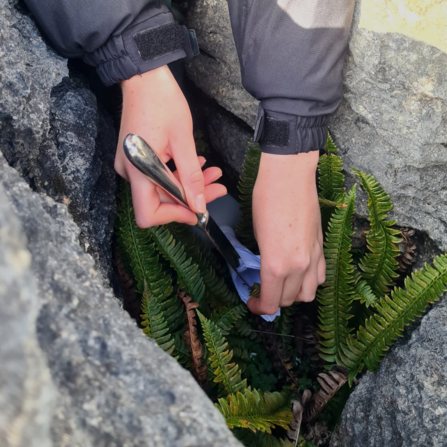
Reseeding ferns in grykes - (C) Liz Coates
Ingleborough National Nature Reserve and neighbouring areas contain 62 upland and montane plant species of which 22 are listed as critical, endangered or vulnerable.
These important plant assemblages are fragmented and degraded, making them vulnerable to losses and climate change. We have set up an Upland Plant Nursery to propagate some of these rare and specialist upland plants, so that we can plant them back out into the landscape - restoring the diversity of upland vegetation and the species it supports.
Example species we are growing include spiked speedwell, purple saxifrage, montane willows, rock whitebeam, holly fern and upland hay meadow species such as globeflower and melancholy thistle.
Conservation grazing
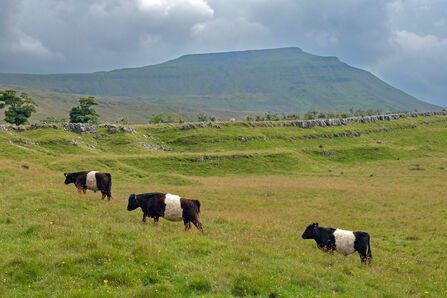
Belted Galloways - (C) David Berry
We use hardy breeds of cattle to act as ecosystem engineers in the landscape. They help to spread seeds in their hooves, coats and dung, and their footprints create dimples of bare ground in which wildflowers and trees can germinate.
Low density grazing allows vegetation to recover and plants to re-establish. Cows chew away at rank grasses, preventing them from outcompeting wildflowers and creating prefect habitats for insects and ground nesting birds.
Monitoring and research
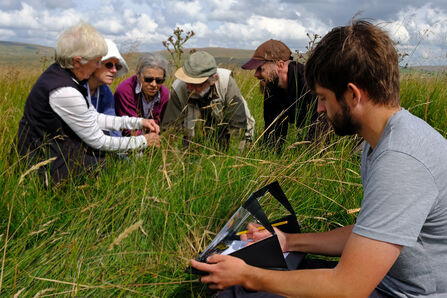
Vegetation survey - (C) Tony Gill
We’re committed to measuring the success of Wild Ingleborough. The University of Leeds is one of our core partners, with a wealth of expertise in research and monitoring; they are collecting evidence on the impacts of Wild Ingleborough on climate, biodiversity and people.
Connecting people with nature
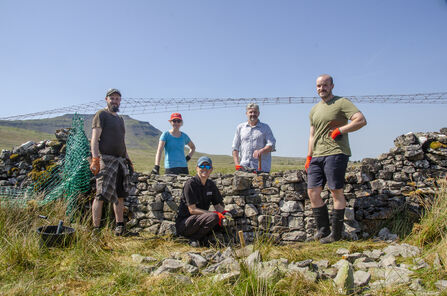
Volunteers helping with dry stone walling - (C) Sara
Wherever possible, we are involving people in Wild Ingleborough. We work with local primary schools to encourage children to connect with the wildlife and landscape on their doorstep. Our Access to Nature Fund supports groups from across the region to visit the area, whatever their support needs.
We run weekly volunteer days, where community members can get involved in practical tasks throughout the year and in (almost!) all weathers. We also run seasonal public events suitable for a range of ages and interests. All events and volunteer sessions can be booked through our Eventbrite page [link]
Tree planting
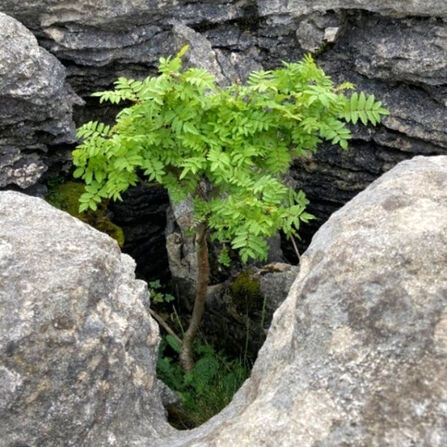
A rowan tree growing in a gryke - (C) Robyn Wrigley
One of our aims is to establish trees to act as seed sources for the surrounding area, largely due to the lack of tree cover in the Yorkshire Dales.
The tree cover currently stands at just 4% with one quarter of that being native broadleaf, the rest being timber plantation. Our planting has focussed on linking up existing fragments of woodland and introducing fingers of trees and montane shrub species up the fell in ghylls and watercourses where there is currently no seed source.
Native species we’ve planted include holly, rowan, silver and downy birch, oak, wild privet, purging buckthorn, spindle and hazel to name a few. These pockets will act as microhabitats for invertebrates, mammals and birds to inhabit. As the trees mature and produce seed, natural regeneration will begin to occur, extending and reconnecting fragmented patches of woodland.
